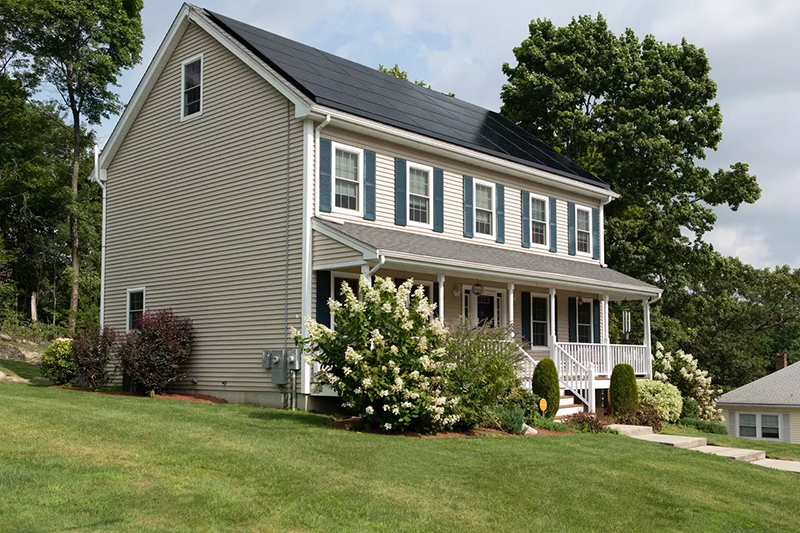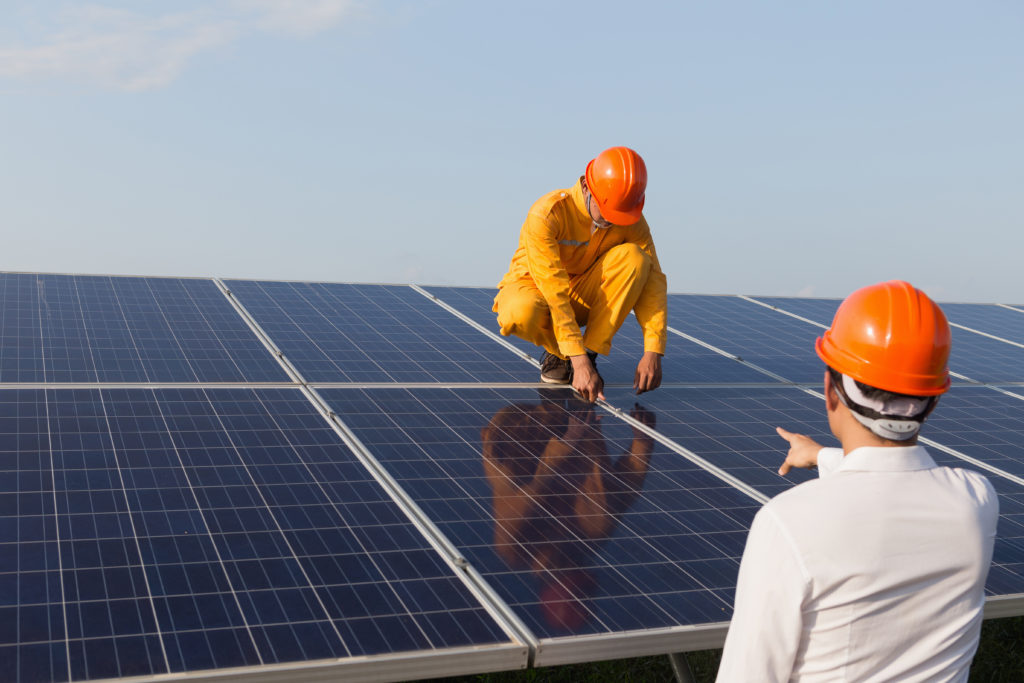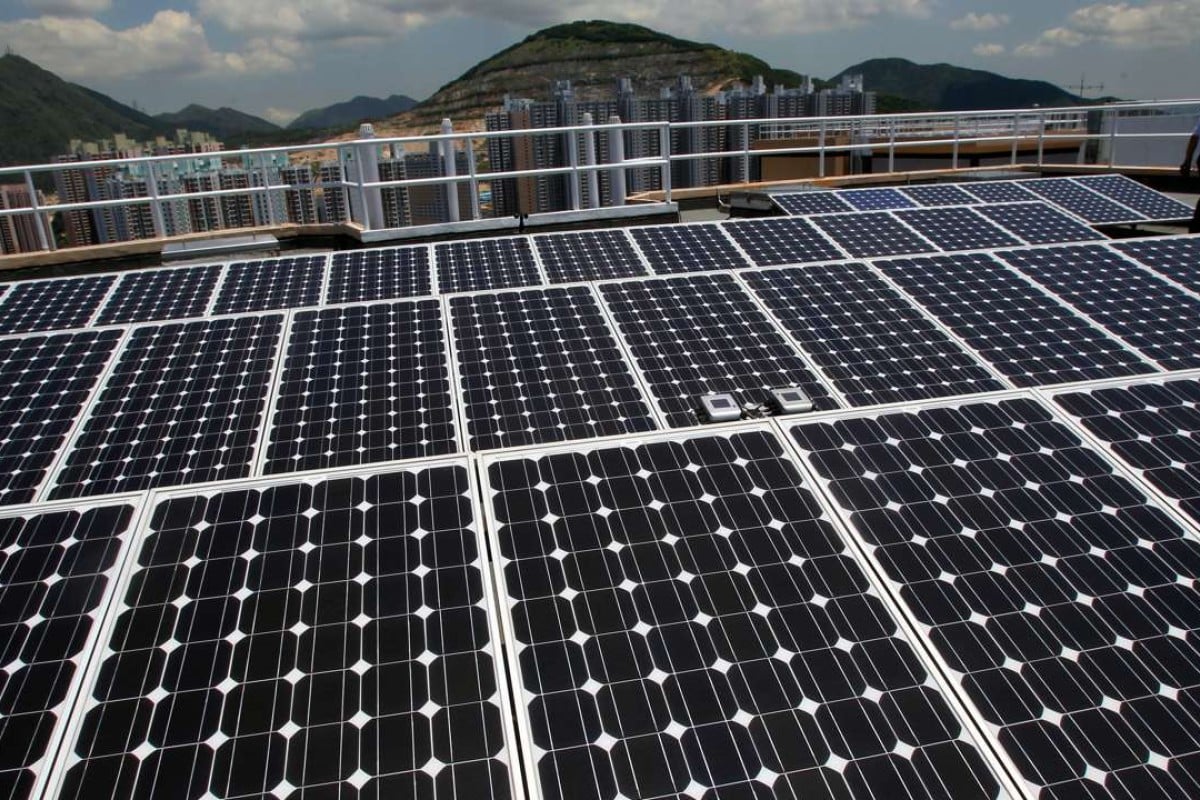Selecting Your Solar Panel
The type of panel used has a big impact on how efficiently and effectively the batteries will charge since panels vary hugely in price point, construction efficiencies & power output. A 300-watt panel with a higher efficiency percentage (20% or more) will charge batteries at extended periods faster and better than one of lower specs.
What to look for in a panel
- Solar panel efficiency: shows how effective the solar panels convert sunlight into energy. The higher the efficiency rating, more sunlight can be converted into electricity with panels of lesser surface area. The efficiencies of solar panels generally fall between 15% to 22%. This is especially handy when you have limited space or your location simply does not receive as much sunshine.
- Wattage: A solar panel's wattage indicates how much electricity it can produce during ideal sunlight. A typical domestic solar panel falls between the 250 watts and also the 400-watt variety. The wattage you choose should also correspond to the total energy demand and battery charging needs. It is recommended to have a combined wattage that could deliver an output near 1 kW (for peak sunlight) over the day when designed for charging of a 100 Ah battery at max with this kind of system.
- Factors like Size and Weight: The overall size of solar panels contributes to the ease (or difficulty) in installing them. Larger heavier panels are usually more wattage and this can be a consideration if you have constraints such as the limited space or structure your mounting surface.
- Durability: Made to resist environmental stresses such as hail, large snow volume and strong winds with an associated warranty. The most reputable panels have warranties of 25 years or more - ensuring they still perform to a certain efficiency level after.
Solar Insolation Analysis
It is also crucial to know how much solar insolation you can access, and this value informs us in kilowatt-hours per square meter a day. This figure aids in choosing the correct panel size and wattage to cover your energy needs appropriately. If you were to install in places with an average insolation of 4 kWh/m²/day, then a less efficient system may be sufficient. But, if you have low levels of insolation in your area, then the highest efficiency panels can be a good choice as they maximize and provide more energy from less sunlight.
Choosing A Compatible Battery
Choosing the correct battery is one of the most important ways to make your solar power system efficient and long-lasting. The battery reserves the electricity from solar panel to not be lost so that I can use it at night or while no sunlight. Everything has to match up other than the battery type, its capacity and amount of discharge needed for your requirements as well as what your solar installations' spec sheet says.
Battery Type Common options include:- Lead-Acid: Inexpensive, and known to be the most frequently photographed available in a couple of noteworthy dimensions for larger stationary installations. But maintenance is necessary, and they have a shorter service life with reduced DoD.
- Lithium Ions: Lithium Ion or L ion has more significant first costs, but these are mitigated by their superior efficiency; longer life cycles and deeper Depth of Discharge (DoD). They are very space conducive and virtually maintenance free.
- Saltwater Batteries : A clean fuel battery made up of the saltwater electrolyte. These are non-toxic and recyclable, but also less energy dense than Li-ion for now relegated to niche applications.
- Energy Consumption and Solar Panel Output - 3 Important Points to Take Into Account when Sizing Battery CapacityCapacity & Power requirements:Selection of battery rating should depend on the daily energy consumption and solar panel output that is being used. A house using 30kWh per day, for example should be serviced by a battery system designed to store and dispatch that amount of energy. Conversely, the power rating should be based on peak load requirements Take, for example, a note that the peak load of a home is 5 kW then battery system needs to deliver this much power instantly.
- Depth of Discharge (DoD) is crucial to understanding the DoD for extending battery life. Having a high DoD allows us to exploit the full capacity of our battery. A good example of this is a lithium-ion battery- they are generally designed with up to 90% DoD, so you can theoretically use the whole capacity of the battery without unduly stressing it.
- Cycle Life and Durability - This indicates the number of cycles a battery will perform before its performance is significantly reduced - charging/ discharging cycle As a reference point, many high-quality lithium-ion batteries (not ours!) have longevity up to 3000 or more charge cycles at an incredible DoD of just 80%. You need to choose a battery with an equivalent or higher cycle life than how much you are going to use it throughout the years of its life in your system.
- Solar panels and Charge controller compatibility: Make sure the battery voltage is correspond to your solar panel, charge control or not. Inefficient charging: Mismatched components will be unable to work in synchronization and have an adverse impact on the charging which can perform less than expected system performance.
- Warranty: One last but very important point is what warranty you get with the battery, always consider this. A battery with a longer warranty period will usually have consistent quality levels and the company are more sure of their batteries. Moreover, ensure there is accessible customer services for help with problem solving and guidance.
Setting Up Your Solar Charging System
So laying everything out correctly is important fact for the Solar Panels and batteries to be able work most efficiently as well provide a longer lifespan. Implementation of this involves planning at a very fine level, selection best suitable materials and installing it in such a way that Sunlight is efficiently captured & stored.
First Plan and Sizing of Components
Start with the true calculation of your actual energy needs. This will determine the scale of your solar panel array and size of battery system. For instance, if a home uses 10 kWh per day and gets around five hours of direct sunlight in the peak sun period it will need solar panels that can deliver at least 2 kW (that is given how well its array - i.e., roof facing, pitch etc. The sizing must also account for seasonal variability in solar radiation.
Choosing the Location:
Where you are going to do your work is the part of this challenge and what I am trying for months now, just scratch that statement... it was taken too long. In doing this, the solar panels will be located in areas that receive full sun at least some of every day during all four seasons. In general, systems point south in the northern hemisphere at an angle equal to their latitude on location. Solar Pathfinders and solar software are tools that can be helpful for analyzing sun paths to see if shading from trees or another building may cause issues.
Mounting the Solar Panels:
Shed Roof panels cannot do but ground-mounted or actually roof mounts can. Your mounting system will need to be robust and orientated correctly. Check that the roof structure is sufficient to carry panels for roof installations. When it comes to ground-based installations, ensure the mounts are driven into the soil sufficiently deep such that they can withstand conditions like wind and snow load. The panels should be inclined according to the latitude, with manually tiltable solutions being adjusted seasonally.
Wiring & Electrical Connectivity :
Always install high-quality, strong wiring that is rated for outdoor exposure and able to withstand UV rays and moisture. All wires should be routed and protected to avoid damage that would negatively affect power delivery. Solar panels are connected to the solar charge controller, a device that protects your batteries from being over charged due day time when sun is brightest and helps Batteries last longer. You want to be sure that all electrical connections are clean, tight and insulated in order to avoid potential hazards as well as performance issues.
The Delivery Of The Battery Storage:
In an ideal setting, a battery bank should be placed in a cool and dry environment with proper ventilation to avoid overheating and extend the life of your batteries. Batteries should be put on a non-conductive surface and kept in the box if located outside. You will also need cables of the right gauge to handle the anticipated current but secure connection is a must from battery bank to charge controller. It is slightly more complicated than that and requires regular maintenance checks for corrosion, and tightness of connections to maintain optimal function.
System Testing and Preliminary Monitoring
After installation, a complete system test should be performed to make sure all components are working properly. Run the system output and efficiency for first few days so that any initial issues could be identified. Having a monitoring system is key to managing the production, efficiency and keeping potential problems escalated over time.
Optimizing Solar Panel Efficiency
Improving the efficiency of solar panels is vital for optimizing how much energy your solar charging system can produce in total. Solar panels with good efficiency lead to higher energy production and thus more electricity from the sun is converted. Important if you want an effective battery charging
Installation Angle and Orientation:
The direction and angle of solar panels heavily affect exposure to sunlight. This angle is dependent on location and time of the year to some extent A typical >25% factor (for example with latitude-based tilt angle in the U.S.) that can be increased well beyond this then integrated into a 20-30% more kWh per Mw installed compared to flat install. Ideally, the orientation should be true south in the Northern Hemisphere to allow for maximum sun exposure throughout the duration of a day.
Cleaning and Maintenance Schedule
Things like dust, debris and other obstructions can prevent solar panels from receiving sunlight. Effective cleaning can improve performance by up to 5-10%. For instance, in dusty atmospheres like the deserts, it might be necessary to clean once monthly for peak efficiency.
Use of Quality Components:
Quality inverters and charge controllers are the key to maximizing your solar energy conversion. Request a Quote For instance, modern MPPT (Maximum Power Point Tracking) charge controllers can increase charging efficiency up to 30% than older PWM (Pulse Width Modulation) by adjusting the voltage in order extract more power of solar panels.
Shade Management:
Alternatively, if one panel is even partially shaded the output of the whole system will be affected. It should avoid the shading of plants from surrounding trees, buildings and structures nearby. In areas of the country where shading is inevitable, like many parts of New England, using microinverters or power optimizers can help because they make each panel act as an individual unit able to function independently and reduce the performance impact that shading would otherwise have on a larger system.
Thermal Management:
Hotter means decreasing efficiency for solar panels. Maintaining optimum levels of ventilation beneath the panels will keep them cool, assuring Maximum power(Air layer increases cooling performance). In hot climates, by installing a few inches above the roof or ground both allows for natural air circulation between panel and mounting surface to literally breathe away 20-25? of temperature heat whereas additional A junction can raise output efficiency up to another 10%-15%.
Monitoring And Maintenance
The performance and life of a solar charging solution can be maintained only with proper monitoring and periodic maintenance. They help to detect and stop potential problems before they become serious issues, ensuring optimal system performance.
Routine Visual Inspections:
Performing visual checks on the solar panels, mounting structures and wiring can identify potential issues like dirt accumulation, physical damage or age degradation. For example, a cracked panel or frayed wire might not perform the system well at all that could be exposed through a survey. Visual Inspections - Quarterly or more often
Cleaning Solar Panels:
When it comes to solar panels, dust and leaves may pile up leading blocked sunlight which decrease the panel efficiency. Solar panels can lose up to 25% efficiency in dusty areas if they go uncleaned. Establishing a local cleaning schedule to, as appropriate, monthly (dusty areas) or biannually (less dusty areas), can keep the system producing at its top potential.
Monitoring Performance of a System
Performance monitoring tools, either directly from the solar inverters or separate performance monitoring systems, to provide real-time tracking of energy production and system health. These tools will notify you if there is too much of a performance decrease, issues including shading inverter faults or degrading panels. Ensuring the performance of a system can be optimized through ongoing data analysis.
Checking Battery Health:
If the system has batteries, then it is important to test the health or charge levels of these too. But, monitoring things like battery voltage and charge cycles to make sure they are not being over charged or drained too low. In addition, make sure the battery environment is protective and temperature controlled in order to prevent overheating. Also check that connections are not corroded.
Preventive Maintenance Scheduling
Preventive maintenance refers to fixing defections through replacement of Ageing parts, Tightness check with all the connections lost due synthesis effect and updating system firmware. When I stick to my manufacturer recommended maintenance plan, it prevents the unexpected system failures. For instance, swapping a solar inverter out prior to the end of its anticipated lifespan can save you from unexpected entire system failure.



